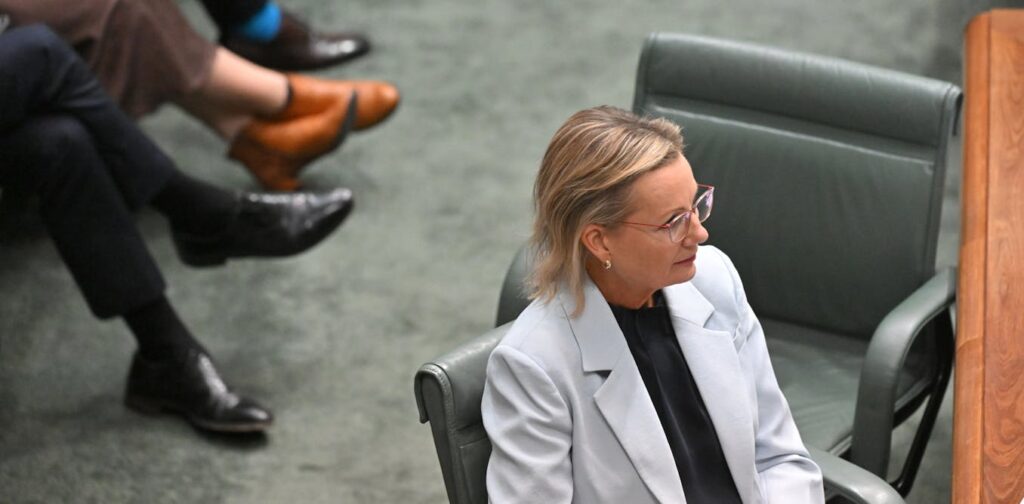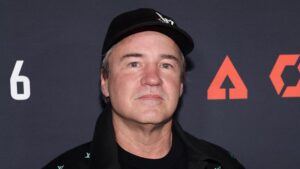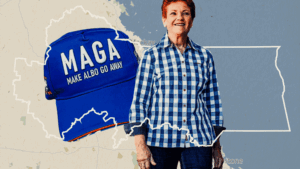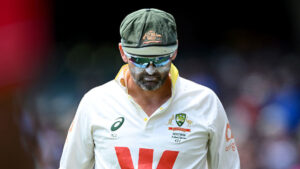
Opposition Leader Sussan Ley is facing a critical moment in her political career, with recent polling figures painting a grim picture of her leadership prospects. The latest Newspoll reveals a stark 57–43% lead for Labor over the Coalition on the two-party preferred vote. Ley’s net approval rating has plummeted to minus-33, a dramatic 13-point drop since the last poll, exacerbated by her controversial remarks about US Ambassador Kevin Rudd and Prime Minister Anthony Albanese’s choice of a Joy Division T-shirt.
These numbers would be troubling under any circumstances, but they are particularly alarming given the current existential crisis within the Liberal Party and the Coalition regarding energy policy. Ley’s challenges are mounting as the party grapples with internal divisions over the 2050 net-zero emissions target.
Energy Policy: A Divisive Issue
The Liberal Party is currently split over its stance on achieving net-zero emissions by 2050. This division has been intensified by the Nationals’ recent decision to abandon the target, pulling the Coalition closer to the minor party’s position. Ley, who has previously expressed a desire to achieve net-zero emissions as quickly as possible, now faces the daunting task of maintaining any semblance of commitment to this goal within her party.
Angus Taylor, Ley’s primary rival for leadership, was reportedly open to a compromise involving net-zero emissions, despite his personal opposition. However, he now appears aligned with the Nationals’ stance, further complicating Ley’s position.
Moderate Voices and Internal Strife
Within the Liberal Party, moderate figures such as Deputy Senate Leader Anne Ruston are engaged in a rearguard action to uphold the net-zero target. Ruston has reportedly criticized the Nationals for exerting undue pressure on the Liberals, a sentiment echoed by NSW Senator Andrew Bragg, who advocates for a more effective approach to achieving net-zero than Labor’s.
“We should do net zero better than Labor’s done it,” Bragg stated, emphasizing a long-term vision for achieving emissions reductions.
Some moderates within the party are even open to the idea of a Coalition split, a sentiment shared by certain Nationals members. This internal discord underscores the broader challenges facing Ley’s leadership.
Leadership Challenges and Political Vulnerability
It’s not just Ley who finds herself in a precarious position; Nationals leader David Littleproud is also under pressure, having been swayed to the right by his party’s base. The Nationals’ longstanding skepticism towards net-zero targets has been compounded by a significant rise in support for One Nation, which has surged to 15% in recent polls, highlighting the danger of being outflanked on the right.
In this turbulent environment, an opposition leader with substantial authority would be needed to navigate the chaos. Unfortunately for Ley, she lacks the necessary clout. Despite her efforts to connect with the community and share her personal narrative, she struggles to project a cohesive political ideology, leaving her appearing unmoored.
The Future of Ley’s Leadership
Many within the party, including Ley’s adversaries, anticipate her eventual removal. However, there is a reluctance to act swiftly, as ousting the Liberals’ first female leader just six months into her tenure would reinforce perceptions of the party’s “woman problem.” As a result, Ley finds herself in a state of limbo, with her leadership hanging in the balance.
Political analyst Jane Doe notes, “The Liberals are in a bind. They need to project stability, but the current leadership turmoil is anything but.”
As the party navigates these turbulent waters, the likelihood of a leadership change looms large. Yet, even with new leadership, the fundamental challenges facing the Liberals may persist, leaving the party struggling to regain its footing in the political landscape.





